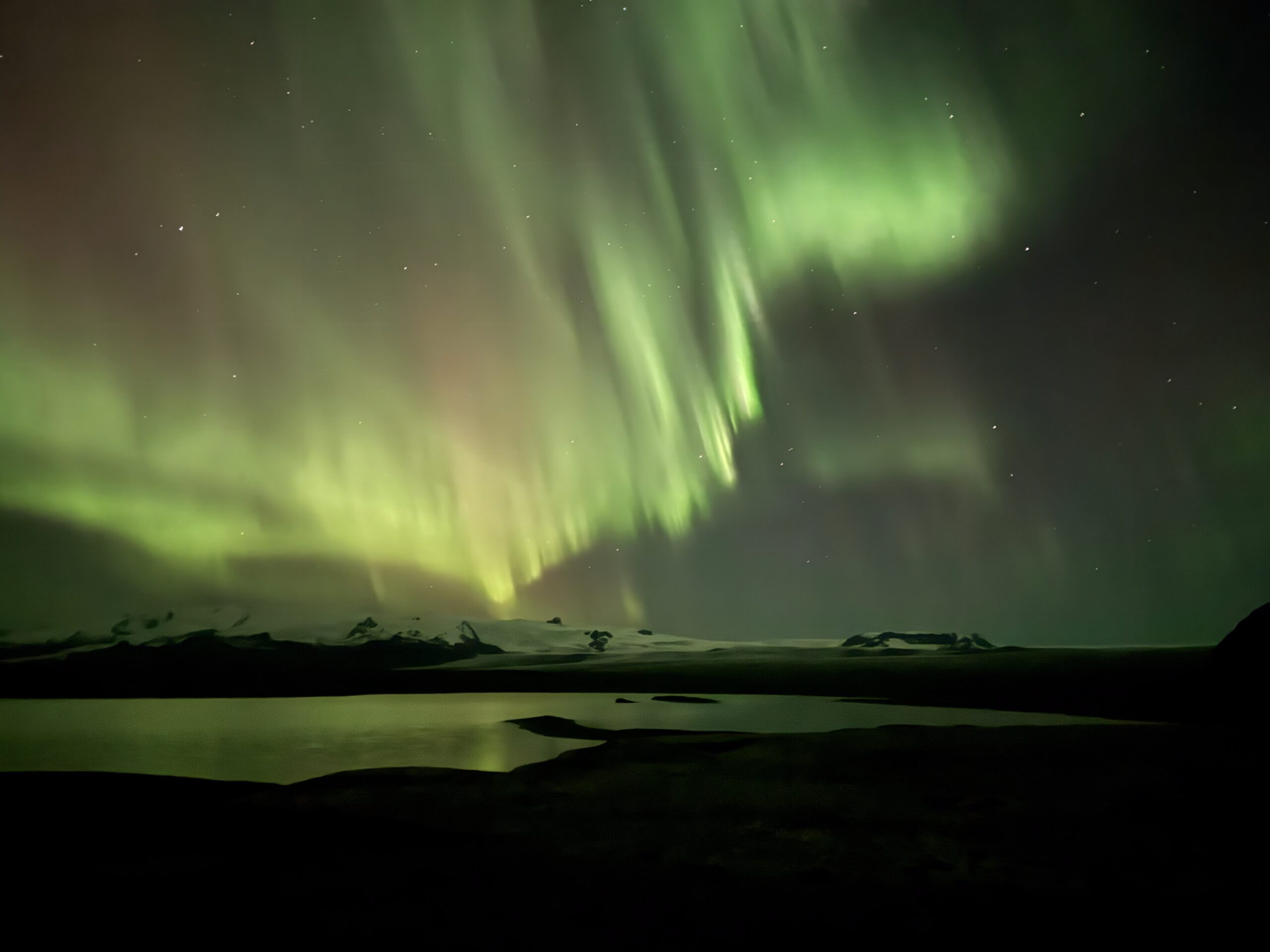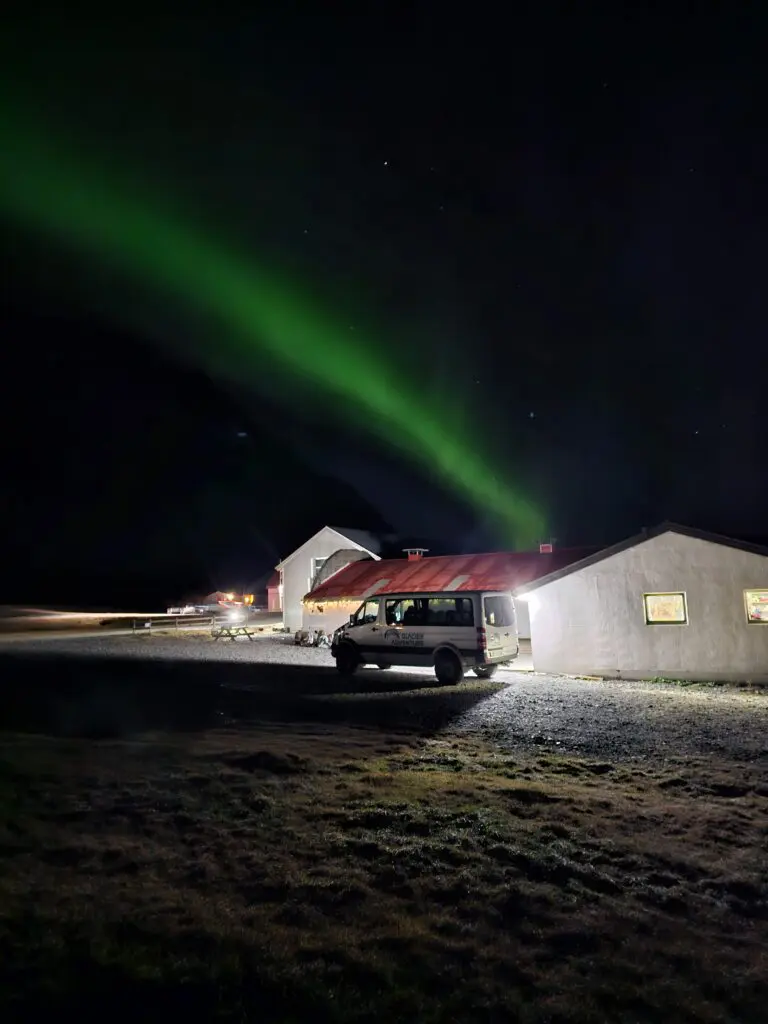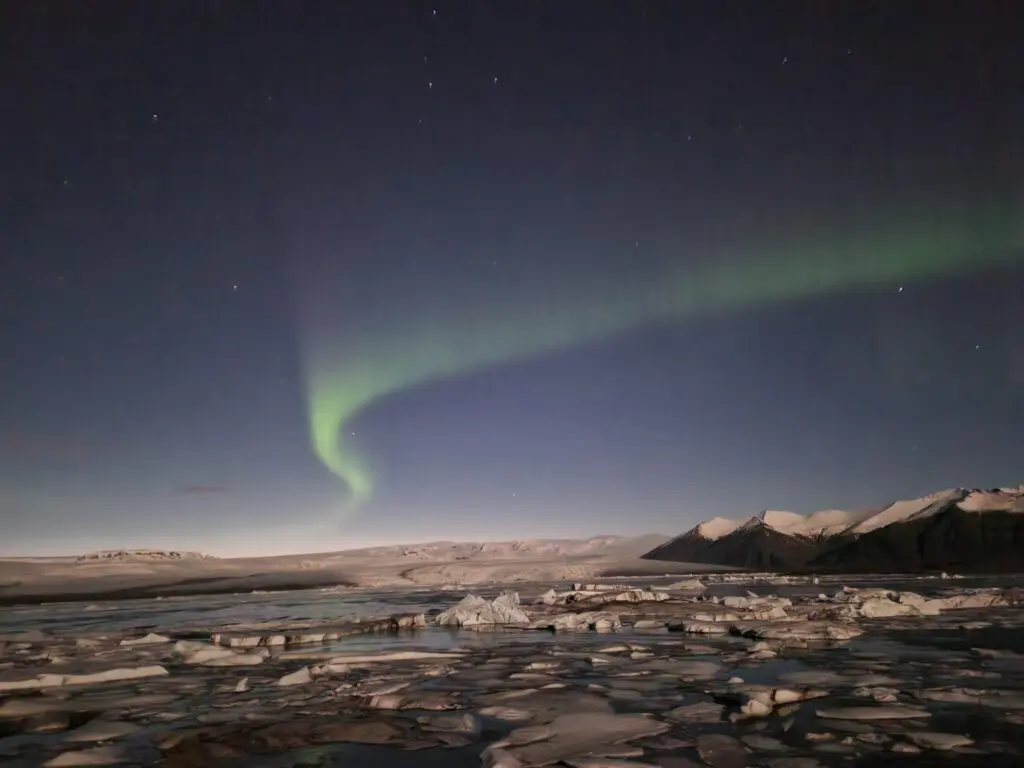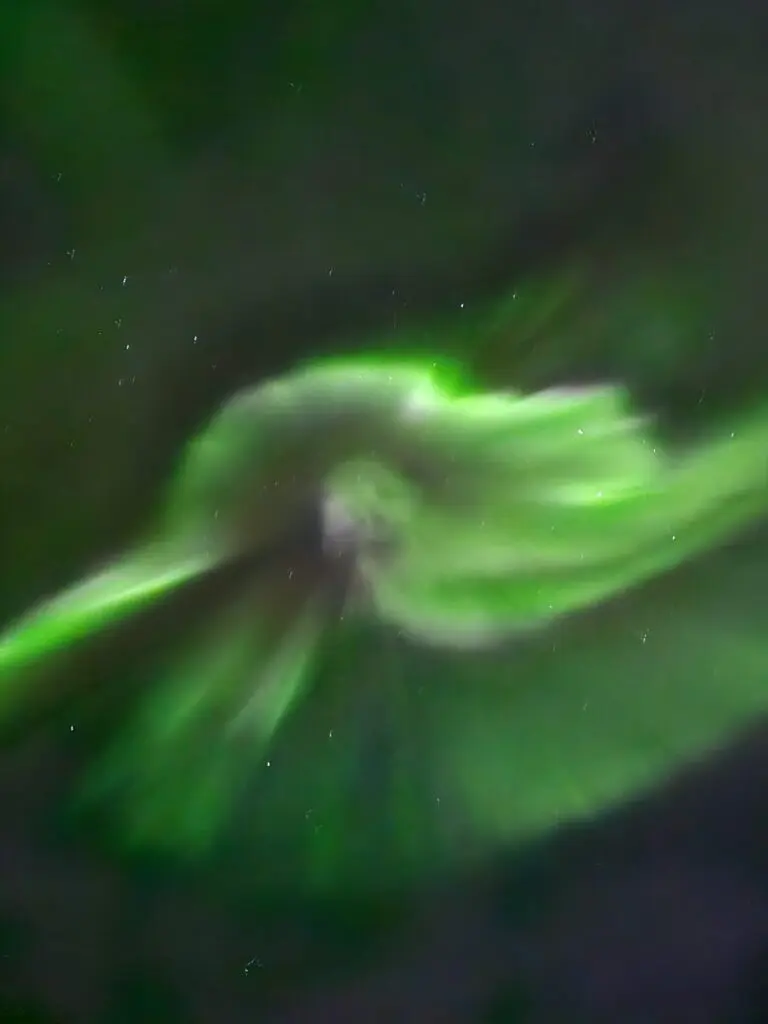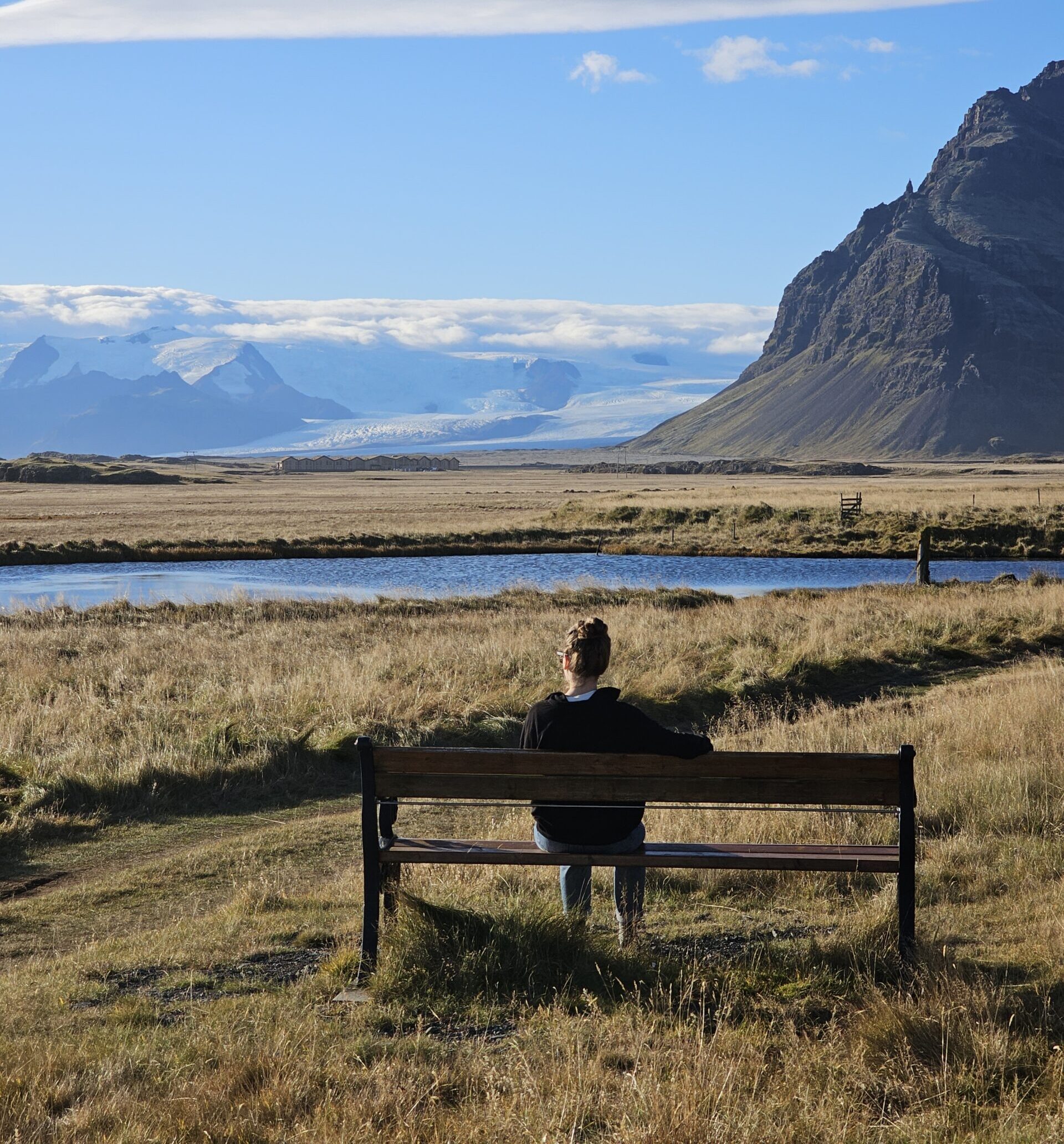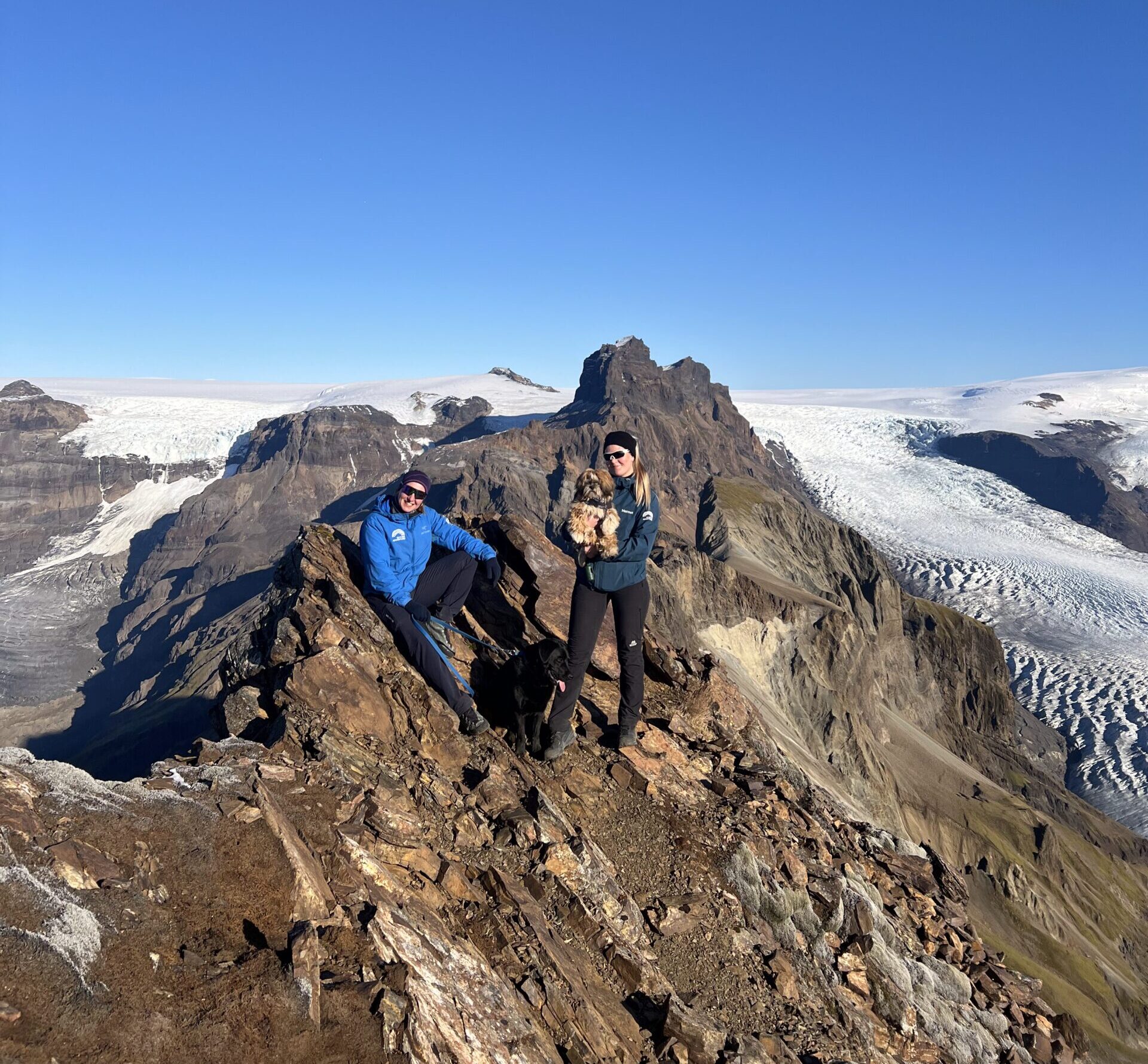The Northern Lights, or Aurora Borealis, are the result of solar storms. When particles from the sun get trapped in the Earth’s magnetic field, the electrically charged particles are isolated between both the North and South poles. The result of the exchanged energy between collided atoms in the atmosphere produces colors, and often looks like the lights are dancing.
To have the best chances of seeing the Aurora, the conditions have to be just right. While the lights can still happen when it’s cloudy, it may be difficult to see them. For the greatest viewing, on a clear night, it’s best to avoid street lamps, or any kind of extra light (though sometimes the moon is bright enough!).
To identify if there are high chances of seeing the lights, scientists use what is called the KP index. This scale measures geomagnetic activity and ranges from 0-9. The higher the number, the more likely the aurora is visible. Usually above a 5 produces the best views. To check the KP index, we recommend the below sources:

